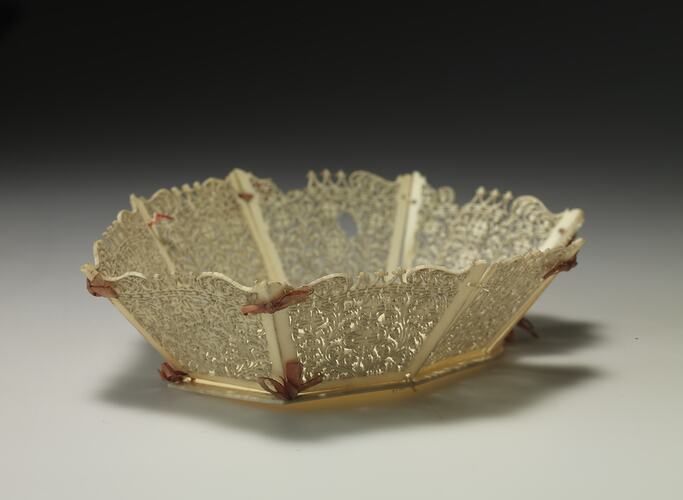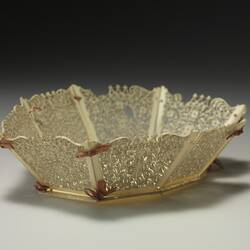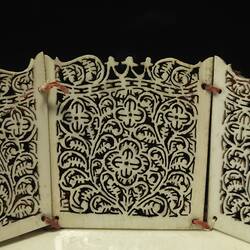Summary
Carved Indian ivory work on display at the 1880 Melbourne International Exhibition was highly regarded for its intricate detail and technical craftsmanship.
Finely carved ivory items, such as this delicate basket, were a noted feature among the Indian exhibits at the 1880 Melbourne International Exhibition.
Made circa 1880, it measures 3.1cm high, 1.8cm wide and 9.2cm deep.
Ivories were exhibited under Class 29, which covered 'fancy articles'; decorative items produced from sandalwood, ivory, leather and basket-work. Exhibits of carved ivory came mainly from two regions of India, Madras and Punjab. Ivory carvings from the country's north west depicted Hindu gods and more domestic subjects, such as elephants, Ganges River boats and their crews, and bullock carts.
Although India had long been part of the British Empire, the 1880 Melbourne International Exhibition was the first opportunity most Australians had had to experience examples of the country's crafts and art works. The Argus later wrote:
Previous to 1880 little was known in this country of Indian art manufacturers and products, but the Exhibition held in that year awakened a new interest in the progress and advancement made by that great dependency of the British Crown, and brought to notice a variety of wares and commodities which have since found a permanent place in the Australian markets.
Indian ivory carvings were especially well-regarded at the Exhibition. The Bengal Sub-Committee were awarded a First Order of Merit for their display of carved ivory, while exhibitors Davi Sahi and Chumba Mal from Amritsar in Punjab, near the Pakistan border, were recognised with a Second Order of Merit.
More Information
-
Keywords
-
Authors
-
Article types



